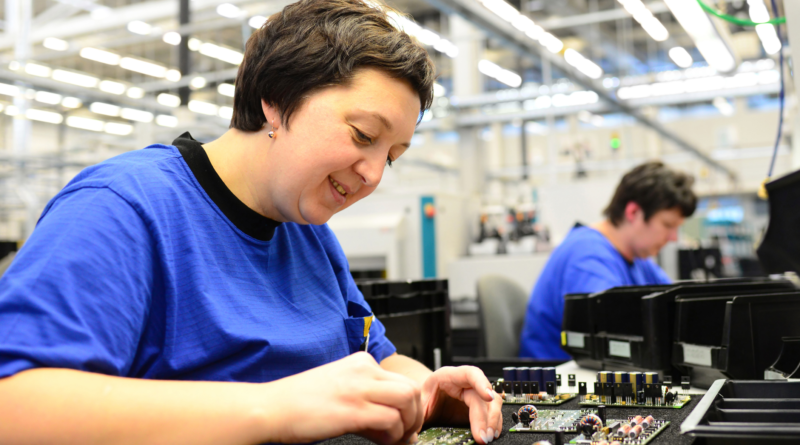Why Lam Research, ASML, and Other Semiconductor Stocks Rallied Today – The Motley Fool
Founded in 1993, The Motley Fool is a financial services company dedicated to making the world smarter, happier, and richer. The Motley Fool reaches millions of people every month through our premium investing solutions, free guidance and market analysis on Fool.com, top-rated podcasts, and non-profit The Motley Fool Foundation.
Founded in 1993, The Motley Fool is a financial services company dedicated to making the world smarter, happier, and richer. The Motley Fool reaches millions of people every month through our premium investing solutions, free guidance and market analysis on Fool.com, top-rated podcasts, and non-profit The Motley Fool Foundation.
You’re reading a free article with opinions that may differ from The Motley Fool’s Premium Investing Services. Become a Motley Fool member today to get instant access to our top analyst recommendations, in-depth research, investing resources, and more. Learn More
There's additional evidence that demand for artificial intelligence applications will drive demand across the semiconductor supply chain.
So much of what is happening in the stock market these days is tied to advancements in artificial intelligence (AI). On the heels of their worst performances in more than a decade, the major market indexes are now squarely in rally mode, driven by the prospects of widespread productivity gains resulting from generative AI.
With that as a backdrop, on Thursday chipmaking tools supplier Lam Research (LRCX -1.92%) surged 9.3%, semiconductor equipment systems provider ASML Holding (ASML -0.60%) rallied 3.5%, and chipmaker Advanced Micro Devices (AMD 0.09%) closed the trading day up by 1%.
Lam Research reported robust results fueled by a surge in demand, which the company attributed to the ongoing AI boom.
Image source: Getty Images.
For its fiscal 2022 fourth quarter, which ended June 25, Lam Research reported results that were better than investors anticipated. The company generated revenue of $3.2 billion, down 31% year over year and 17% sequentially. At the same time, Lam’s earnings per share (EPS) declined by about 1% to $5.97.
While that might not seem like much to write home about, analysts’ consensus estimates had been calling for revenue of $3.1 billion and EPS of $5.07.
Further driving investor enthusiasm was the company’s bullish forecast. For the current quarter, management is calling for revenue of $3.4 billion and EPS of $5.82. While both of those results would be significantly lower than those it delivered in the prior-year quarter, that outlook was above analysts’ consensus expectations, which call for revenue of $3.3 billion and EPS of $5.54. CFO Doug Bettinger said that the company’s improving operational efficiencies were beginning to have a positive impact on its results and positioning the company for future success.
Perhaps as intriguing to investors was management’s commentary regarding the adoption of generative AI.
CEO Tim Archer said that the world is still in the early stages of adopting these technologies, and he expects the wave to continue over the next few years.
While 2023 is a down year for [wafer fab equipment], the long-term dynamics for the semiconductor industry are strong. Emerging growth drivers such as generative AI are only in their initial stages of adoption and will be fundamental to driving increased investment in both memory and foundry logic fabs over the next several years.
He went on to outline the need for advanced servers to handle the demands of AI, suggesting that “every incremental 1% penetration of AI servers and data centers is expected to drive $1 billion to $1.5 billion of additional [wafer fab equipment] investment.
This provides an additional reason to expect the AI-driven boom will continue, which bodes well for Lam and its peers in the semiconductor industry.
Nvidia (NVDA -0.79%) kick-started the narrative of the soaring demand for AI when it reported the results for its fiscal 2024 first quarter, which ended April 30. It wasn’t so much the results themselves as management’s eyebrow-raising outlook, which called for revenue growth in fiscal Q2 of 64% year over year and 53% sequentially. Furthermore, Nvidia execs discussed the accelerating demand for AI at length, further stoking investor enthusiasm.
So what does this have to do with ASML and AMD? It’s easy to draw a straight line from strong end-user demand for Nvidia’s AI chips to demand for AMD’s wares, as it competes directly with Nvidia in the chip space. By the same token, ASML manufactures the EUV lithography machines that advanced chipmakers use to produce these cutting-edge chips. Strong demand for those chips will ultimately result in increased demand for the equipment needed to manufacture them.
In this case, strong demand for state-of-the-art semiconductors is a rising tide that lifts all boats, and will do for some time to come.
Danny Vena has positions in Nvidia. The Motley Fool has positions in and recommends ASML, Advanced Micro Devices, Lam Research, and Nvidia. The Motley Fool has a disclosure policy.
Invest better with The Motley Fool. Get stock recommendations, portfolio guidance, and more from The Motley Fool’s premium services.
Making the world smarter, happier, and richer.
© 1995 – 2024 The Motley Fool. All rights reserved.
Market data powered by Xignite and Polygon.io.
